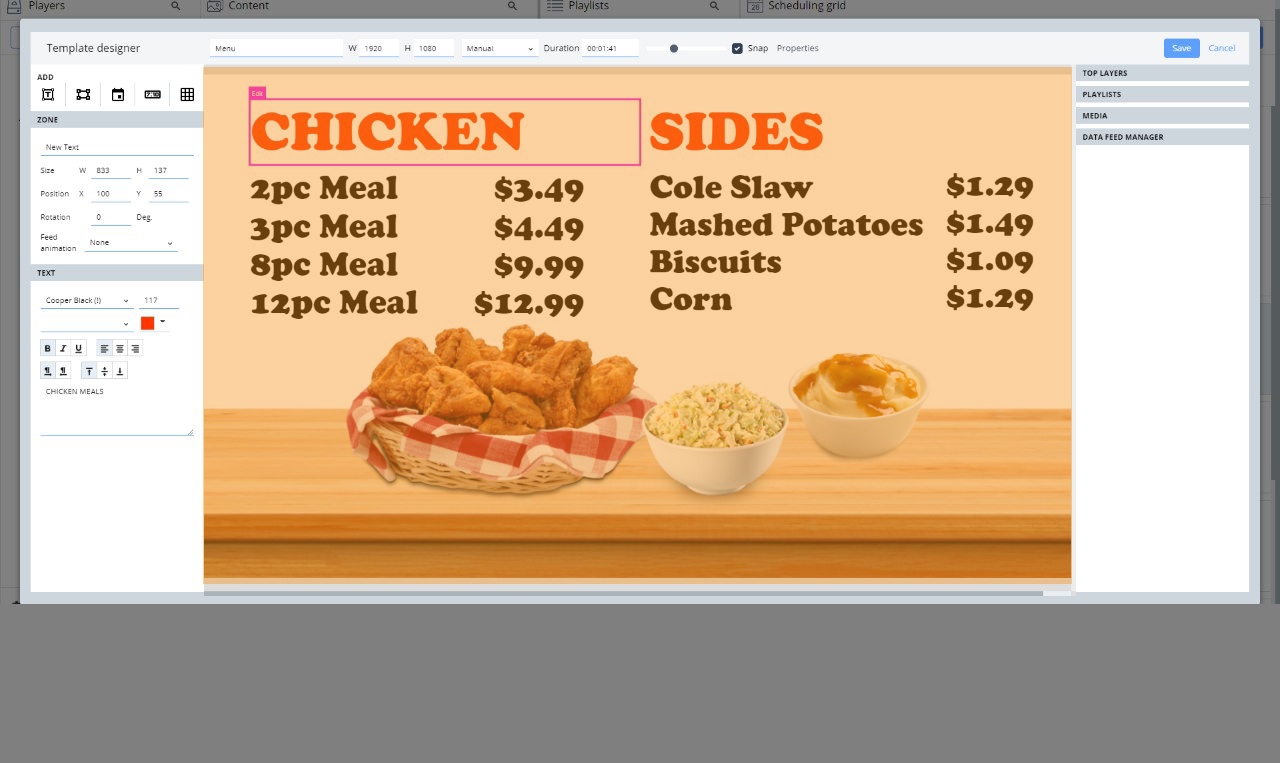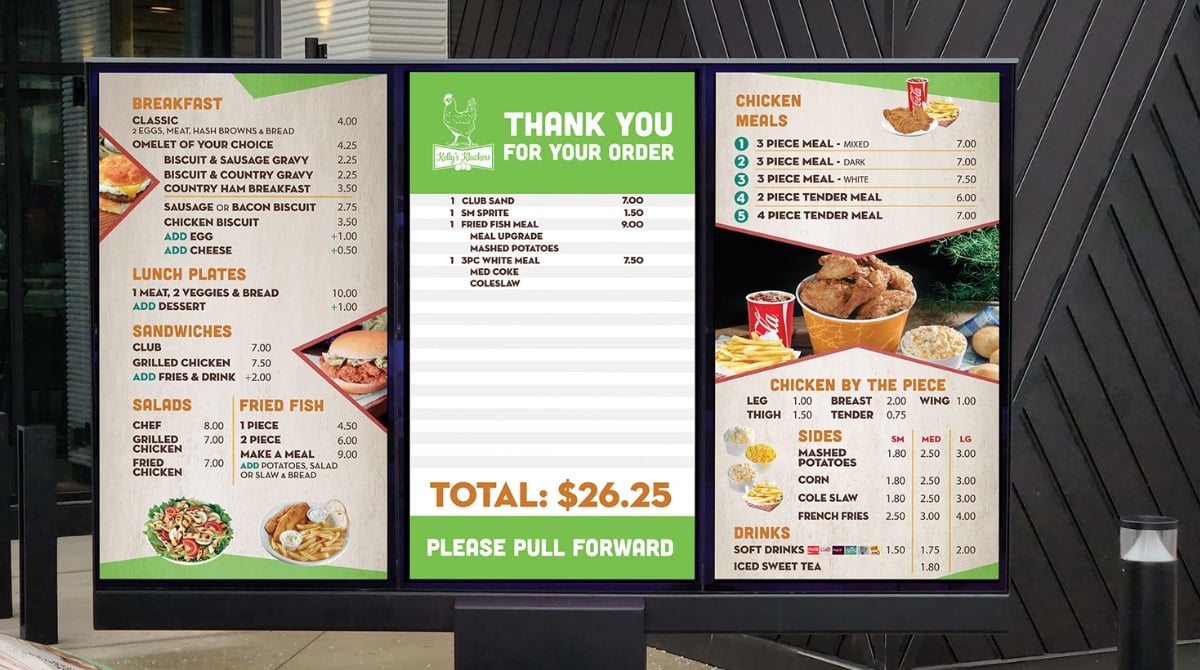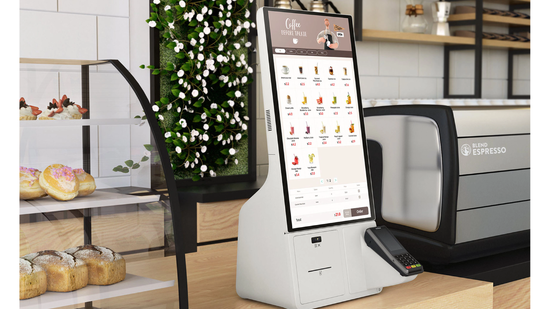How We Help With All Your Branding Signage and Technology needs
How We Help with all your Branding Signage and Technology needs
Table of Contents
First things first, let’s define “branding signage and technology.”
The Howard Company has spent 75 years “connecting our customers with their customers.” You know us because we are your drive-thru partner. But branding signage and technology do not live solely in the drive-thru. Here are some reasons to consider The Howard Company for more than just your drive-thru. It also lives inside the restaurant, with your graphics package and printed menu boards that make your place look like your brand. It lives in the digital menu board software that shows off your menu dynamically to your guests. It lives in the order confirmation software that gives your guests confidence that they will get the right order. It lives in the VoiceAI that interprets the guest’s speech and displays it for the customer. It lives in the kiosks your customers are increasingly likely to use for self-ordering. It lives in the building signage that calls to your customers from the street.
In short, the branding signage and technology powered by The Howard Company are a complete ecosystem of the guest-facing assets and software you need to develop your brand, grow ticket averages, and increase average unit volume, all while making your team's job easier.
Want to learn more about branding, signage, and technology?
Printed Branding Assets

How much time does your team spend managing multiple vendors for printed branding assets in your locations? Let’s break it down. Your team (or your creative agency) creates the assets in coordination with your operations, franchise development, and culinary teams.
- If you have a team of graphic designers, asset creation is part of their day-to-day work. This may be a great solution—your team knows your brand and is privy to the short—and long-term company objectives. A talented in-house team will faithfully depict your brand identity in the assets they create. It is also probably the most efficient method for asset creation. But, pressure to reduce overall payroll and frequent turnover may make having an internal graphic design team untenable and using an agency more attractive.
- If you are using an agency to create the assets, hopefully, you have one that has served you for some time, so they are an extension of your marketing efforts. This is also great—long-term relationships with vendors, especially those helping you grow your brand through branding assets, are very beneficial. However, efficiency drops significantly when using an outside agency to create assets, and costs increase. Every meeting is a billable event. Your marketing team must coordinate the development of the assets, review proofs, and in many organizations, get input from other departments for the creative before the final approval. At $100 - $150 per hour, every project represents a hit to the bottom line.
- Whether you are utilizing an internal team or an agency, although they may be trained graphic designers, are they versed in how to set up a menu board for maximum revenue generation? They may be able to make beautiful designs, but do they know how to make beautiful designs that attract guests’ eyes to your highest margin items? Do they have tools to evaluate menus to take advantage of typical eye movements?
- how much does your marketing team spend managing every new project if you use an agency? How much back-and-forth is there? How many emails and phone calls are there? If you have tiered pricing or offer different items regionally, you have to do this for every new store opening.
- Does one agency do all your branding assets? Every location probably needs window graphics, indoor and outdoor posters, LTO graphics, table tents, indoor and outdoor menu boards, and even printed décor items. On a bigger scale, they need monument signs and building signs.
- When the agency and/or your internal team finishes the artwork for the new location, what happens then? How many vendors must your marketing team coordinate with to produce those graphics? In most cases, it is at least three – one for the smaller things like the posters and LTOs, another for the menu boards, and another for the exterior signs. Each vendor has different requirements for:
- How do you deliver art files (email, web portal, Box or WeTransfer)?
- What type of files they need (editable pdf, Illustrator, InDesign files, jpgs, Photoshop files)?
- Are the assets sized properly for their printer requirements with the correct cut lines and die lines, or does the vendor have to resize, reformat them, and add these elements? Do they charge for this?
- What are each entity’s typical timelines? How do you manage multiple unique schedules and get everything done on schedule so you do not delay new restaurant openings?
- How do they handle revisions and approvals, and is there a charge for revisions?
- Are you working with a dedicated member of their team or an anonymous online self-service print company?
- Once you have approvals from all the vendors, you must ship the finished products to the locations. Packages are sent separately from each vendor, increasing shipping costs. Tracking the shipments takes time for your team and the on-site team. Also, smaller packages can be misplaced in the chaos of a restaurant opening, requiring expensive reprints.
The Howard Company can SIMPLIFY this considerably. Here’s how:
- We have a team of professional graphic designers. Our graphic design rates are considerably lower than most agencies, starting at $100 per hour, but averaging about $75 per hour.
- Our graphic design team is the best in the business in designing menu boards for maximum revenue generation. They will dig in with your team to understand your menu, what items are your cash cows, and which options are your brand standards. With that knowledge, they will produce a menu board that attracts guests' eyes to what you want them to see. They can also do proprietary heat mapping and gaze sequence analysis of your menu if you wish. Savvy operators measure sales results from before and after this exercise.
- Our talented team does not only do menu board graphics. They create all branding assets for restaurants - window clings, LTO graphics, posters, table tents, POP materials, drive-thru wings and toppers, exterior signs – everything you need in your branding package.
- We do not outsource printing – we are also a full-service print shop. That means:
- You work with a single team member for your entire project. That means you have one person to call, one to email, and one to speak with regarding revisions.
- Your team doesn’t have to produce assets in multiple formats.
- You don’t have to juggle multiple timelines. You provide all the assets (or work with us to create them) and they all get done at the same time.
- Everything ships from one place – adding printed graphics into the shipment of menu board equipment means you reduce shipping costs significantly.
- We build the site to suit your needs, working closely with you to set up your branding assets and permissions, following your new store opening guidelines.
- Using product templates, you and your franchisees can easily roll out new prices simply by logging in and editing the premade templates.
Approvals can be managed however you prefer – if there is someone on your team who needs to approve all assets before they go out, we can set it up that way.
d. The original site build-out is completely free of charge. Future major modifications may incur some development charges.
Digital Branding Assets

If you have digital menu boards, many of the things mentioned above still apply—communication with your agency, timelines, and knowledge of how to set up menu boards for maximum revenue generation. But digital menu boards add a couple of additional dimensions of complexity. Here are some things to consider:
- Does your graphic design team or agency know how to use your content management software, so it does what it does best, such as day-parting, using motion and other design elements to draw the eye to high-margin items, and scheduling LTOs?
- Does your screen vendor also provide your content management software, or are you purchasing it separately? If separately, who is loading the software? Does your team know how to do that? Are they also loading monitoring software like TeamViewer so you can have remote access to the screens from Corporate?
- When there is an outage, do you know who to call for help– the screen vendor or the software provider?
- Are your indoor and outdoor menu boards running on the same software? Wouldn’t updating menu items in only one CMS rather than two be much more efficient if they aren't?
- Does your vendor train your team in using the CMS? Do they even give you the choice of managing the content yourself, or do they require you to have them manage it? What do they charge for content management, and what is their timeline for updating screens?
The Howard Company can SIMPLIFY this considerably. Here’s how:
- Our graphic designers are highly skilled artists and extremely adept at content management and setting up the CMS to achieve your objectives. In most cases, the person you are working with for graphic design is the person you will be working with for content management. Since they know so much about building menus for maximum revenue generation, they are a great partner for content management, with deep knowledge of best practices.
- We provide the digital screens, produce and manage the content. Before the screens leave our building, we load the content management and monitoring software, giving you and your team complete access to both.
- If there is a problem, call us. We’ll diagnose if it is the screen itself, a problem with the software, or perhaps a mistake in scheduling. Sometimes there is a warranty claim, when you’ll likely work directly with the screen manufacturer, but we’ll be there to guide you through that process.
- To keep costs down, many restaurants use different providers for indoor and outdoor screens, often opting to use big-box store monitors indoors. Although this may save money in the short term, it will add cost (because the screens have a significantly shorter lifespan) and hassle (each location having to use jump drives to update the screens with JPGs, one by one, climbing up on a ladder or chair, trying to reach the USB port on the back of the monitors) and probably lead to different-looking menus inside and outside. Big-box store screens do not have sufficiently robust onboard computers to be able to run content management software, and they most certainly won’t have remote monitoring software, meaning the corporate team has no control over what’s on the screens.
- Your content belongs to you, and your team is best equipped to understand what should be displayed and when. That’s why we encourage you to learn to use the software so you can manage it yourself, with our team as your backup support. After we set it up just the way you want, you can take the reins. However, as mentioned above, with shrinking payrolls, you may prefer to have us manage the content. Our rates are below market at around $75-$100. We offer buckets of hours that can be used for content management or graphic design – the more hours you purchase, the lower the price.
- When there is a change to the art, pricing, or LTOs, having digital menu boards means you don’t have to coordinate with multiple vendors for the print and digital assets. It all goes to the same person.
Software Integration

- Do you want Order Confirmation on your drive-thru menu boards? If so, who is providing the software? Many operators take the package deal from their POS provider, which may seem like a good deal, but there are downsides. Most POS providers consider order confirmation functionality a small value add to the package they sell you. Their business is not generally customer-facing, and because of that, their solutions can be clunky.
- Are you considering using VoiceAI in the drive-thru? Does the Order Confirmation software from the POS company integrate with any Voice AI solutions?
The Howard Company can SIMPLIFY this considerably. Here’s how:
- The Howard Company’s proprietary Order Confirmation software works with most major POS solutions. The most appreciated feature of our software is the “product dictionary” that we build into every instance. Your POS has lots of abbreviations that may not make much sense to your guests. For example, your POS display and kitchen terminal may show “10 pc nug xtra bbq.” That doesn’t look great on the customer-facing order confirmation. Our dictionary will translate that into much more readable “10-Piece Nuggets with Extra BBQ Sauce.” This dictionary is unique to your operation.
- Because the OCS is built by the same company who manage your content on your digital screens, we can design it to fit your menus. This often means moving items around on the screen when the order starts popping up. By working with us, we set the digital menu board up to show what you want – perhaps you want to keep your high-margin LTOs on the screen and disappear fountain drinks. Or maybe the reverse. Any time you want an update, you contact the graphic designer who created your art and manages the content on your digital screens.
- VoiceAI is growing in popularity, and there are many AI companies that are trying to break into the restaurant space. Most will not last long, so picking a partner and being confident they will be in for the long haul is daunting. The Howard Company works with several of the major VoiceAI tools, but the biggest point of distinction between us and the competition is that we integrate not only with the POS, but also with the order confirmation system. This advancement is crucial in that it gives both the customer and the restaurant full confidence that the tool is interpreting the speech correctly. If it isn’t, the guest will see it on the order confirmation screen and will be able to correct it before the meal is made. This will save you money in remakes and give the customer a much better experience.
- Using software that is integrated into the POS, digital menu boards, and kiosks will make life much easier for on-site teams.
Kiosks

- Are you considering adding self-ordering kiosks? If not, why not? The data in incontrovertible - ticket averages go up by at least 15%, and if done well, close to double that.
- How easy is it to integrate the kiosk with the POS? How do I keep our tech stack from getting too bloated? And how does my team keep up with all the different software?
- How hard is it to set up the kiosk so that I take advantage of all the upselling potential?
- Is it reasonable to start thinking about outdoor kiosks, and how they would best be deployed?
The Howard Company can SIMPLIFY this considerably. Here’s how:
- The Howard Company partners with several kiosk hardware and software companies. Because we work with you in the drive-thru, we understand your brand well, so we can help you decide which solution is best for you.
- As your solution provider, leave the integration to us. Most kiosk software already has integrations with the major POS software, so it is more a matter of setting it up rather than going through a full integration process with all the costs involved. Part of that setup will be to design the upselling combinations. And now AI is joining the party. When you turn on AI suggestive selling, the tool learns your customers’ habits and suggests the items guests most reliably take when offered. This really juices the average ticket amount.
- Outdoor kiosks are coming – not only for walk-ups but also for drive-thrus. Who else would you trust with any new equipment in the drive-thru but The Drive-Thru Experts at The Howard Company.

SHARE